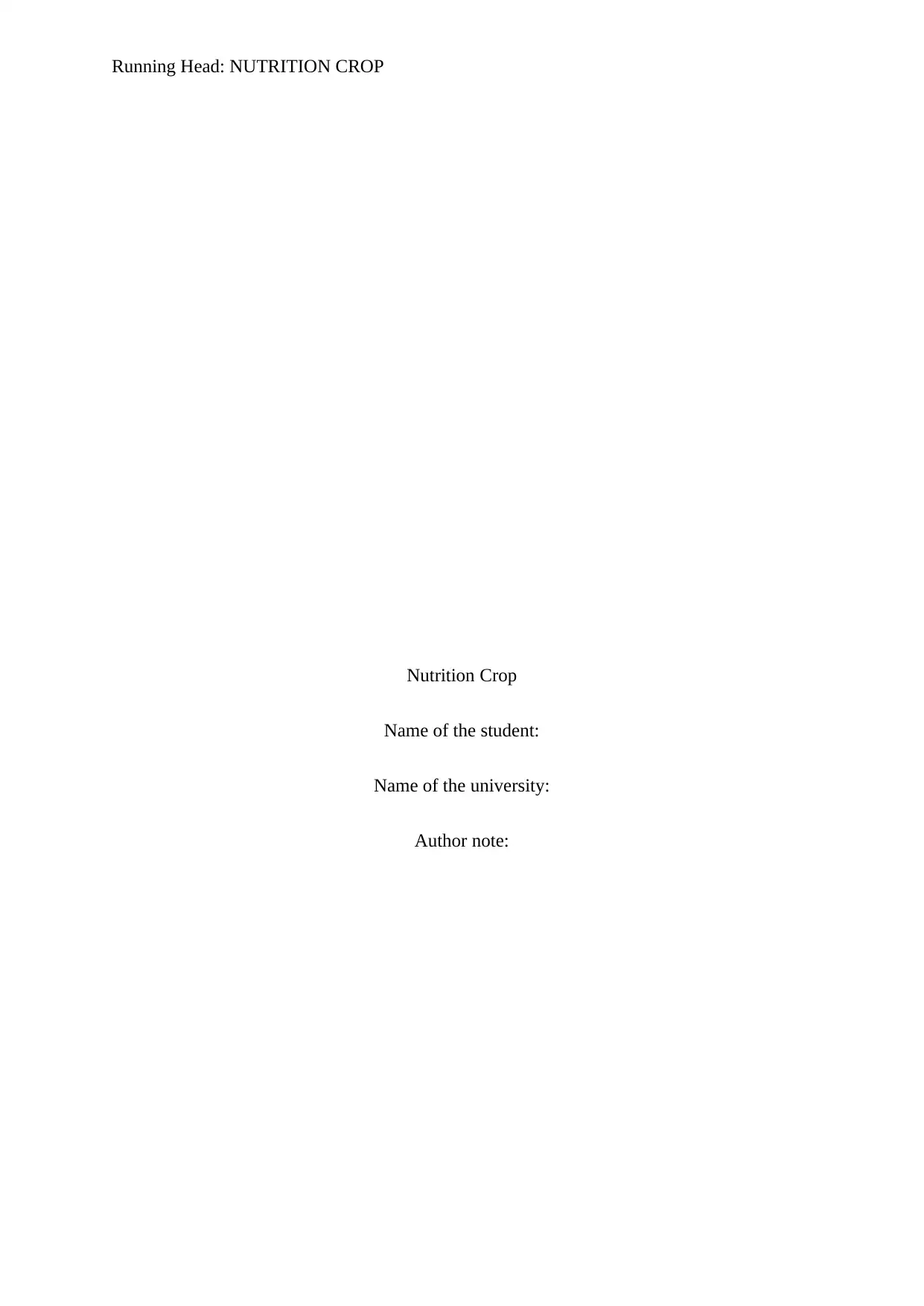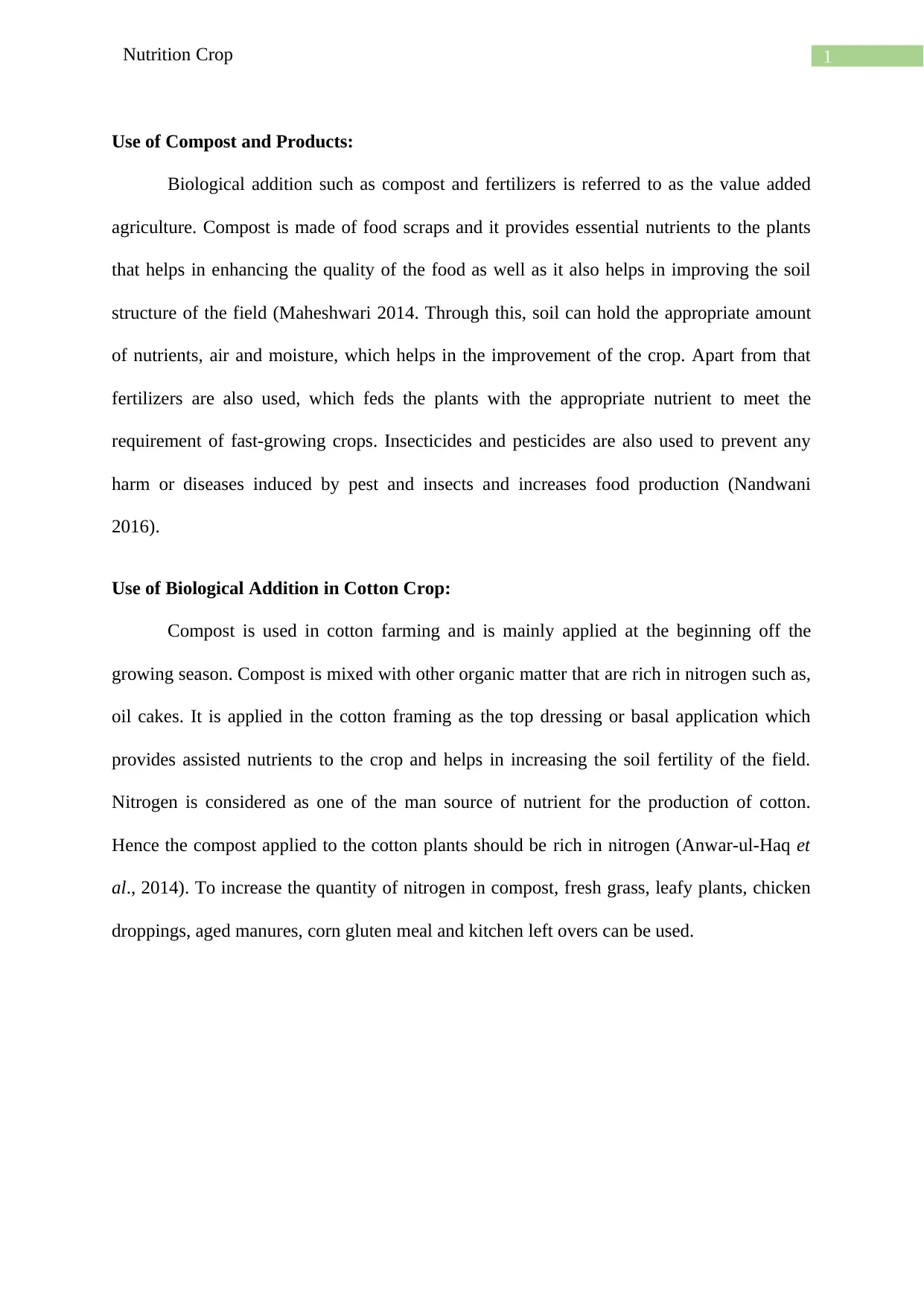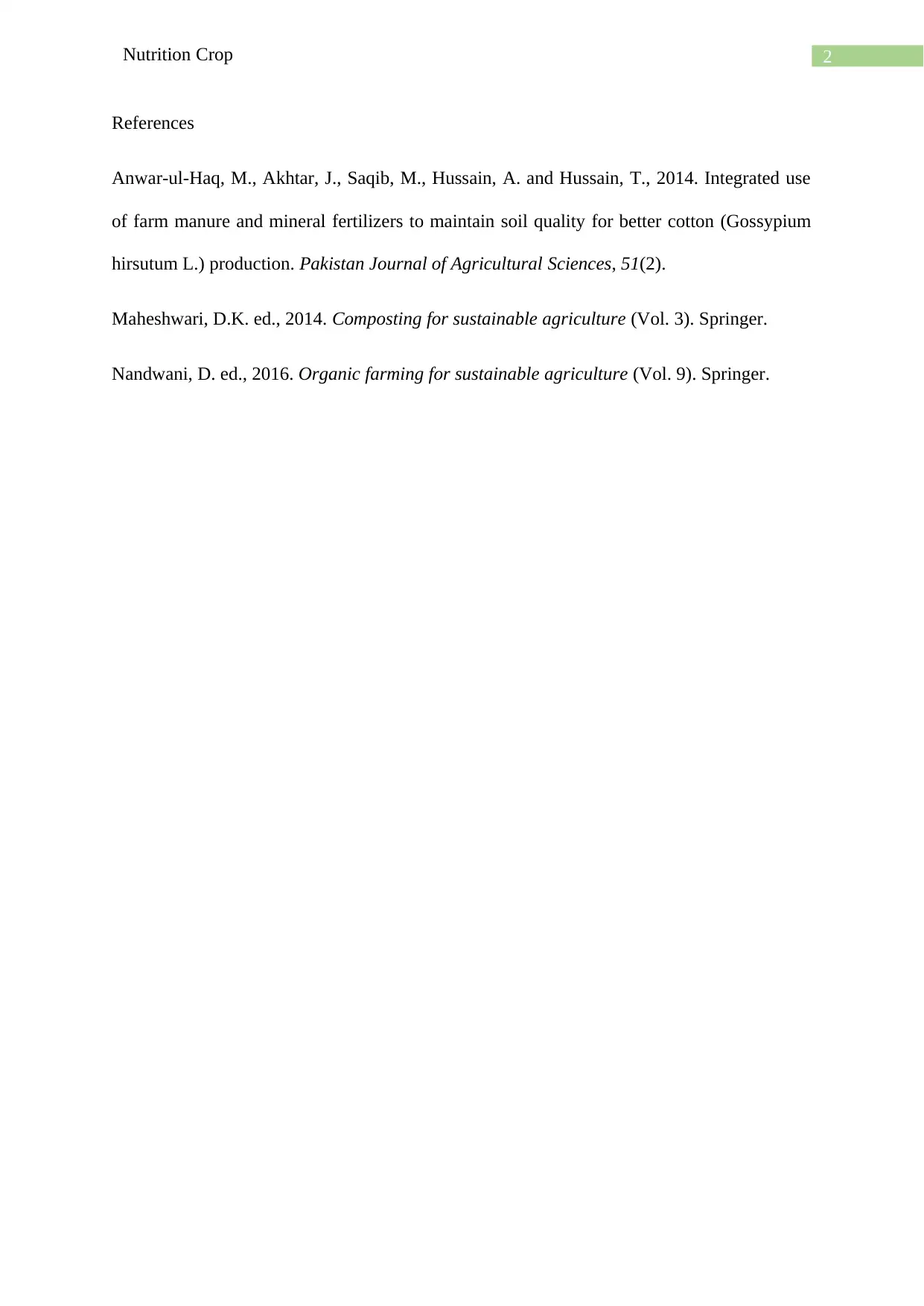NUTRITION CROP.
VerifiedAdded on 2023/01/23
|3
|407
|38
AI Summary
Contribute Materials
Your contribution can guide someone’s learning journey. Share your
documents today.

Running Head: NUTRITION CROP
Nutrition Crop
Name of the student:
Name of the university:
Author note:
Nutrition Crop
Name of the student:
Name of the university:
Author note:
Secure Best Marks with AI Grader
Need help grading? Try our AI Grader for instant feedback on your assignments.

1Nutrition Crop
Use of Compost and Products:
Biological addition such as compost and fertilizers is referred to as the value added
agriculture. Compost is made of food scraps and it provides essential nutrients to the plants
that helps in enhancing the quality of the food as well as it also helps in improving the soil
structure of the field (Maheshwari 2014. Through this, soil can hold the appropriate amount
of nutrients, air and moisture, which helps in the improvement of the crop. Apart from that
fertilizers are also used, which feds the plants with the appropriate nutrient to meet the
requirement of fast-growing crops. Insecticides and pesticides are also used to prevent any
harm or diseases induced by pest and insects and increases food production (Nandwani
2016).
Use of Biological Addition in Cotton Crop:
Compost is used in cotton farming and is mainly applied at the beginning off the
growing season. Compost is mixed with other organic matter that are rich in nitrogen such as,
oil cakes. It is applied in the cotton framing as the top dressing or basal application which
provides assisted nutrients to the crop and helps in increasing the soil fertility of the field.
Nitrogen is considered as one of the man source of nutrient for the production of cotton.
Hence the compost applied to the cotton plants should be rich in nitrogen (Anwar-ul-Haq et
al., 2014). To increase the quantity of nitrogen in compost, fresh grass, leafy plants, chicken
droppings, aged manures, corn gluten meal and kitchen left overs can be used.
Use of Compost and Products:
Biological addition such as compost and fertilizers is referred to as the value added
agriculture. Compost is made of food scraps and it provides essential nutrients to the plants
that helps in enhancing the quality of the food as well as it also helps in improving the soil
structure of the field (Maheshwari 2014. Through this, soil can hold the appropriate amount
of nutrients, air and moisture, which helps in the improvement of the crop. Apart from that
fertilizers are also used, which feds the plants with the appropriate nutrient to meet the
requirement of fast-growing crops. Insecticides and pesticides are also used to prevent any
harm or diseases induced by pest and insects and increases food production (Nandwani
2016).
Use of Biological Addition in Cotton Crop:
Compost is used in cotton farming and is mainly applied at the beginning off the
growing season. Compost is mixed with other organic matter that are rich in nitrogen such as,
oil cakes. It is applied in the cotton framing as the top dressing or basal application which
provides assisted nutrients to the crop and helps in increasing the soil fertility of the field.
Nitrogen is considered as one of the man source of nutrient for the production of cotton.
Hence the compost applied to the cotton plants should be rich in nitrogen (Anwar-ul-Haq et
al., 2014). To increase the quantity of nitrogen in compost, fresh grass, leafy plants, chicken
droppings, aged manures, corn gluten meal and kitchen left overs can be used.

2Nutrition Crop
References
Anwar-ul-Haq, M., Akhtar, J., Saqib, M., Hussain, A. and Hussain, T., 2014. Integrated use
of farm manure and mineral fertilizers to maintain soil quality for better cotton (Gossypium
hirsutum L.) production. Pakistan Journal of Agricultural Sciences, 51(2).
Maheshwari, D.K. ed., 2014. Composting for sustainable agriculture (Vol. 3). Springer.
Nandwani, D. ed., 2016. Organic farming for sustainable agriculture (Vol. 9). Springer.
References
Anwar-ul-Haq, M., Akhtar, J., Saqib, M., Hussain, A. and Hussain, T., 2014. Integrated use
of farm manure and mineral fertilizers to maintain soil quality for better cotton (Gossypium
hirsutum L.) production. Pakistan Journal of Agricultural Sciences, 51(2).
Maheshwari, D.K. ed., 2014. Composting for sustainable agriculture (Vol. 3). Springer.
Nandwani, D. ed., 2016. Organic farming for sustainable agriculture (Vol. 9). Springer.
1 out of 3
Your All-in-One AI-Powered Toolkit for Academic Success.
+13062052269
info@desklib.com
Available 24*7 on WhatsApp / Email
![[object Object]](/_next/static/media/star-bottom.7253800d.svg)
Unlock your academic potential
© 2024 | Zucol Services PVT LTD | All rights reserved.

